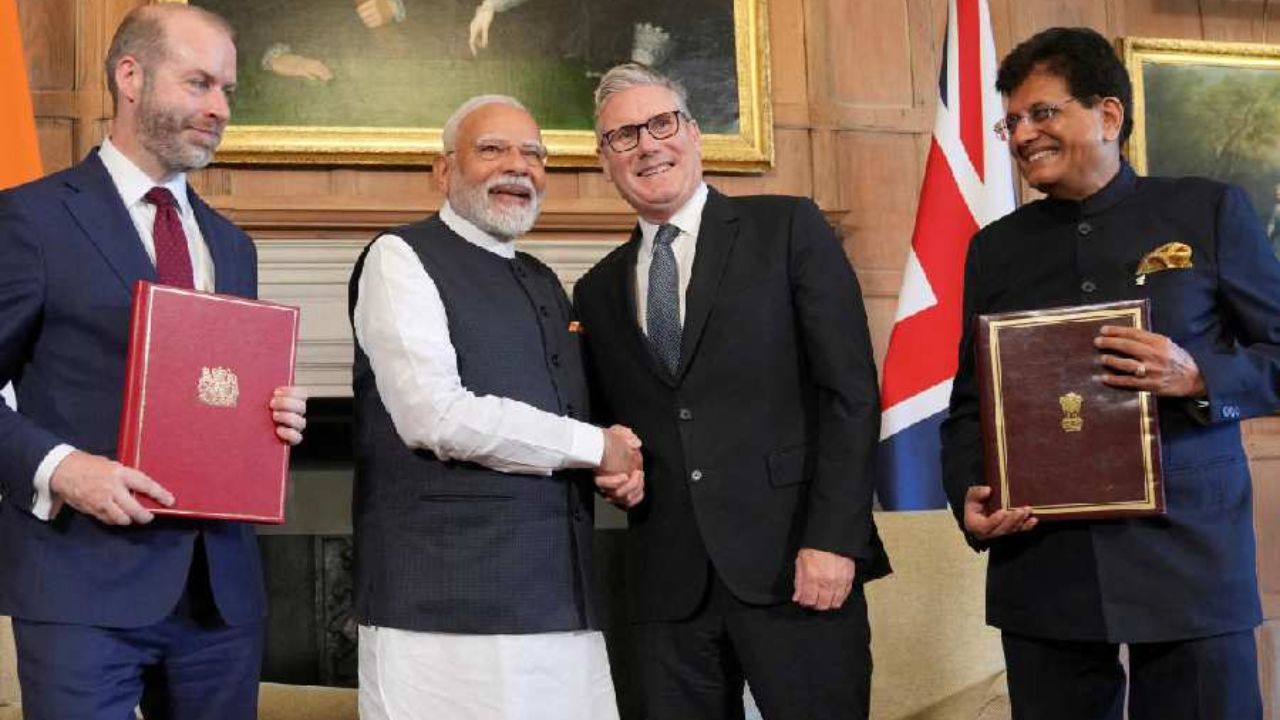 English
English

After signing a landmark UK trade deal, India eyes similar pacts with the US and EU. While the UK accepted India’s terms on agriculture, the US pushes for GM crops. Key challenges include tariffs, transshipment rules, and visa restrictions. Textiles and labor sectors remain focal points.

Will the UK-India FTA Shape America's Trade Agreement with India? (Image Source: Internet)
New Delhi: After signing a landmark free trade deal with the UK, India will be vying for another similar deal with the European Union and America. This agreement can set the template for negotiations with the EU and the US for other FTAs.
To bypass the reciprocal tariffs, which will come into effect from August 1, India had a week-long round of trade negotiations with the US to finalize an interim deal but failed to deliver the expected outcome.
Roadblocks in US-India Deal
India and the UK had been in talks regarding the recently signed FTA, but India had its own issues with the agreement, as the UK wanted to include the agriculture sector. To safeguard its farmers, India kept denying the deal.
However, in the end, the UK had to agree to India's terms and conditions and was denied access to its most sensitive sectors, such as dairy products, apples, oats, and edible oils. In response, India also made some concessions, such as reducing duty on Scotch whisky from 75% to 40% over 10 years and duty on luxury cars from 100% to 10% (albeit in a limited number).
Unlike the UK, the US is impugning the deal and pushing for market access for genetically modified (GM) products such as corn and soya. In order to protect the interest of the farmers, the farmers’ body, the Indian Coordination Committee of Farmers Movements (ICCFM), has urged the government to exclude all aspects of agriculture from the US trade deal.
The UK's trade deal will give new impetus to US-India ties
India's focus in negotiating a deal with the US will be on getting market access in labor-intensive sectors (such as textiles) and maintaining tariff differentials. If the US offers India a 10-15% tariff (such as to the UK and Japan), that would be good, but if it reaches closer to 20% (such as to Vietnam), the advantage will diminish. A big challenge could be the transshipment clause, as India's exports (pharma, engineering goods) often depend on inputs from countries such as China.
Other key points
The US has imposed a 50% tariff on steel and aluminum, which affects Indian exports. India has reduced duties on intermediate goods such as medical devices and aerospace parts from the UK, which may benefit domestic companies. The UK has not given many concessions in visas and services (a quota of 1,800 yoga teachers/chefs annually), which may also become an issue in US talks.
No related posts found.